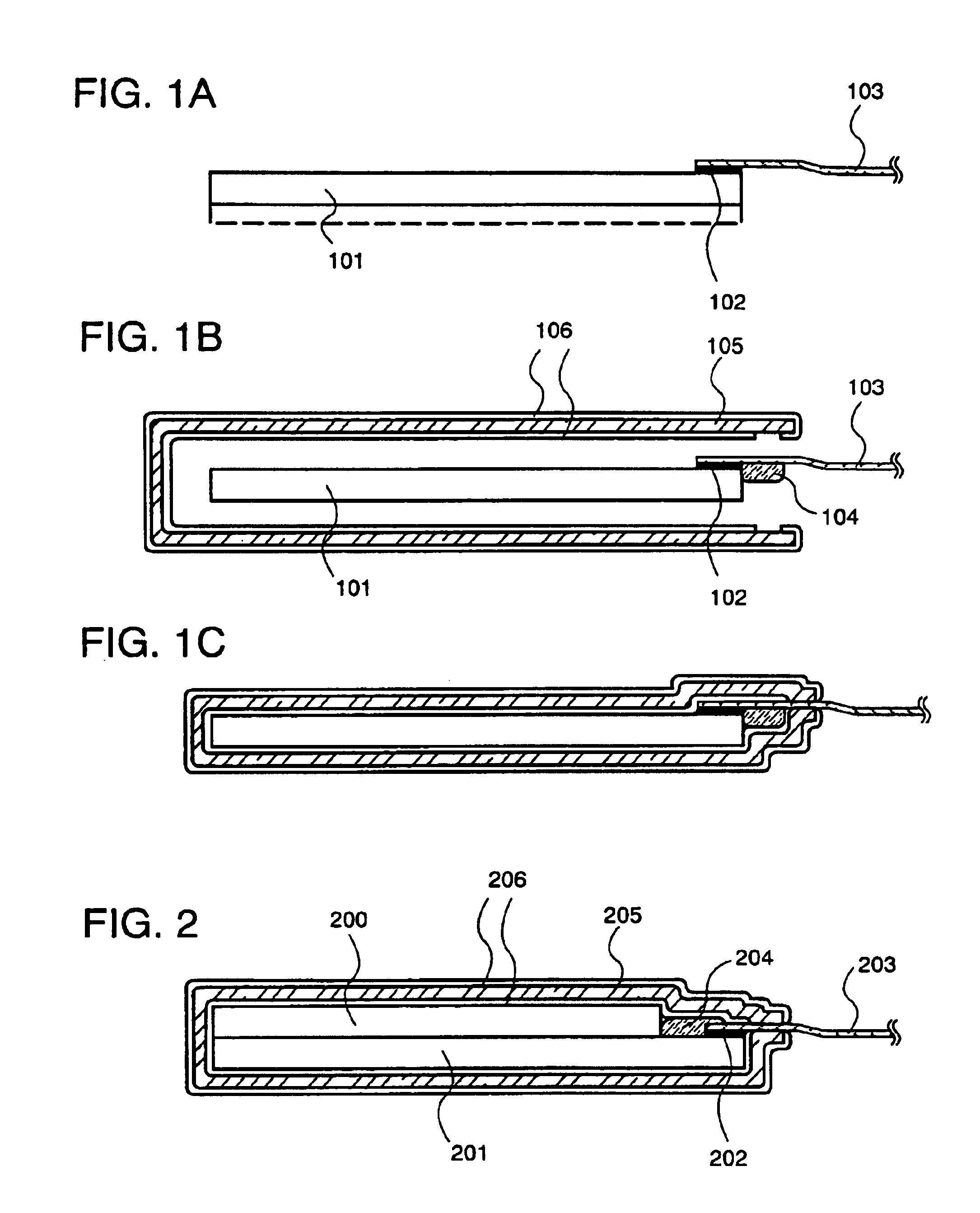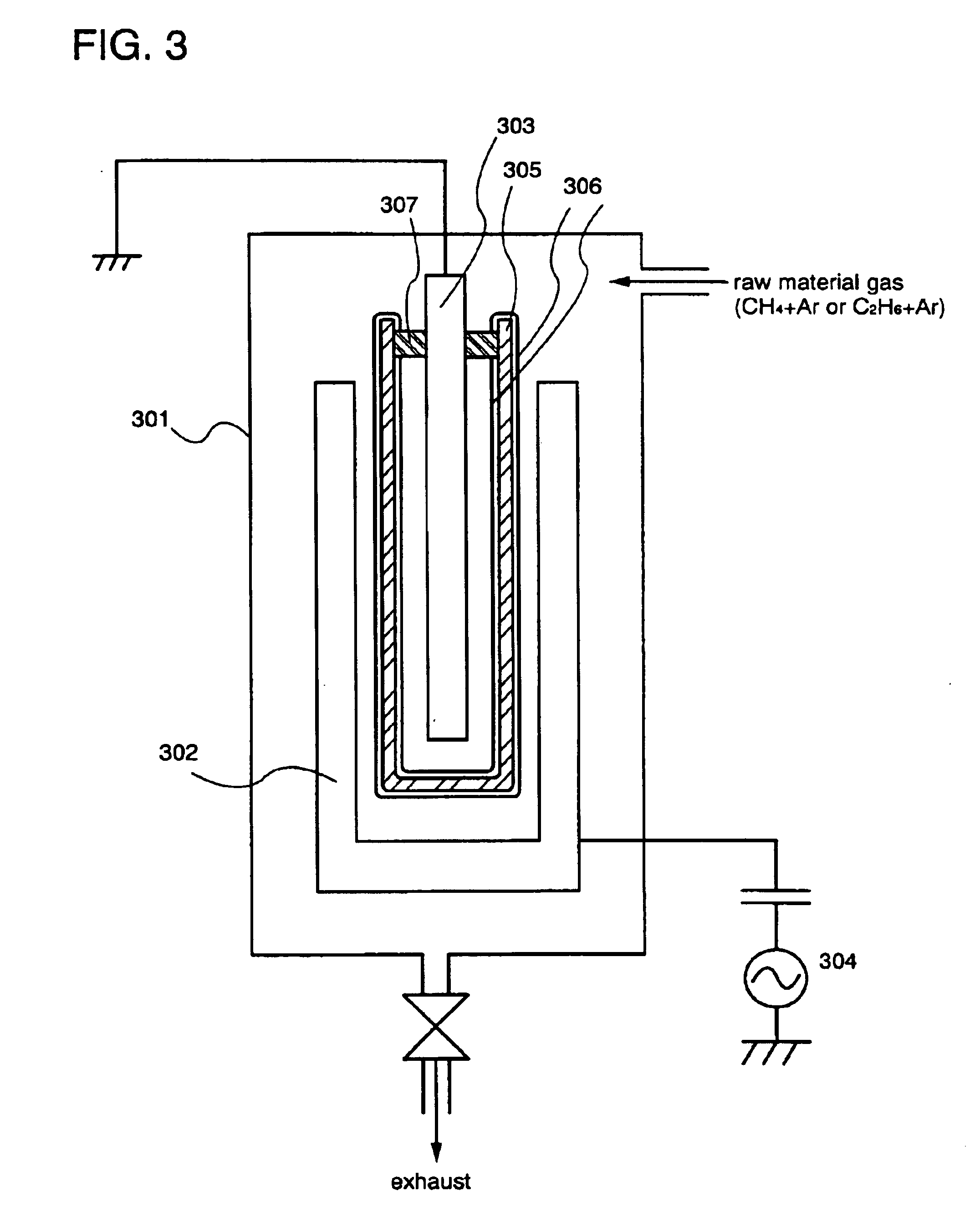Light emitting device, electronic equipment, and method of manufacturing thereof
a technology of light emitting devices and electronic equipment, which is applied in the direction of discharge tubes/lamp details, discharge tubes luminescnet screens, electric discharge lamps, etc., can solve the problems of degrading the device by heat, light, moisture, and oxygen easily reaching
- Summary
- Abstract
- Description
- Claims
- Application Information
AI Technical Summary
Benefits of technology
Problems solved by technology
Method used
Image
Examples
embodiment mode 1
[Embodiment Mode 1]
First, a substrate having an insulating surface is prepared. On the substrate, a light emitting element, here, OLED, and a lead-out electrode 102 are provided. The lead-out electrode 102 connects the OLED to an external power supply. If light from the light emitting element is transmitted through the substrate, used as the substrate having an insulating surface is a light transmissive substrate such as a glass substrate, a crystallized glass substrate, or a plastic substrate. If light from the light emitting element does not travel through the substrate, a ceramic substrate, a semiconductor substrate, a metal substrate, and the like may be used.
In order to reduce the weight of the device, etch off treatment is performed on the substrate and the substrate is thinned. A substrate 101 having the OLED formed thereon is thus obtained. The etch off treatment may not always be necessary. Next, a flexible printed substrate (FPC) 103 is bonded to the substrate 101 to be el...
embodiment mode 2
[Embodiment Mode 2]
A description given here with reference to FIG. 2 is about an example of a light-emitting device in which an OLED is sealed using a sealing substrate 200 and then further sealed by a protective unit.
In FIG. 2, 200 denotes a sealing substrate, 201, a substrate having an OLED formed thereon, 202, a lead-out electrode, 203, an FPC, 204, a desiccant, 205, a wrapping film, and 206, a DLC film containing Ar. Although the film 206 here is a DLC film containing Ar, the DLC film may be replaced by a silicon oxynitride film containing Ar, a silicon nitride film containing Ar, a Ar-containing film of a compound expressed as AlN.sub.X O.sub.Y, or a AlN film containing Ar.
By containing Ar, the film can be flexible and therefore can be prevented from developing a crack or peeling off when used to provide the wrapping film and thermally press-fit in vacuum.
Though not shown in the drawing, the sealing substrate 200 is bonded to the substrate 201 with an adhesive. The space betwee...
embodiment 1
[Embodiment 1]
FIG. 4A is a top view of an OLED module manufactured. FIG. 4B is a sectional view schematically showing one pixel of the module of FIG. 4A.
A pixel portion 404 is arranged on a substrate 401 such that a source line driving circuit 402 and a gate line driving circuit 403 respectively run parallel to two sides of the pixel portion. The pixel portion 404, the source line driving circuit 402, and the gate line driving circuit 403 each have a plurality of TFTs. FIG. 4B shows, as representatives of those TFTs, a driving circuit TFT (composed of an n-channel TFT and a p-channel TFT in FIG. 4B) 411 included in the source line driving circuit 402 and a driving TFT (a TFT for controlling a current flowing into the OLED) 412 included in the pixel portion 404. The TFTs 411 and 412 are formed on a base film 410.
In this embodiment, the n-channel TFT and the p-channel TFT that constitute the driving circuit TFT 411 are manufactured by a known method, and a p-channel TFT manufactured b...
PUM
 Login to View More
Login to View More Abstract
Description
Claims
Application Information
 Login to View More
Login to View More - R&D
- Intellectual Property
- Life Sciences
- Materials
- Tech Scout
- Unparalleled Data Quality
- Higher Quality Content
- 60% Fewer Hallucinations
Browse by: Latest US Patents, China's latest patents, Technical Efficacy Thesaurus, Application Domain, Technology Topic, Popular Technical Reports.
© 2025 PatSnap. All rights reserved.Legal|Privacy policy|Modern Slavery Act Transparency Statement|Sitemap|About US| Contact US: help@patsnap.com



